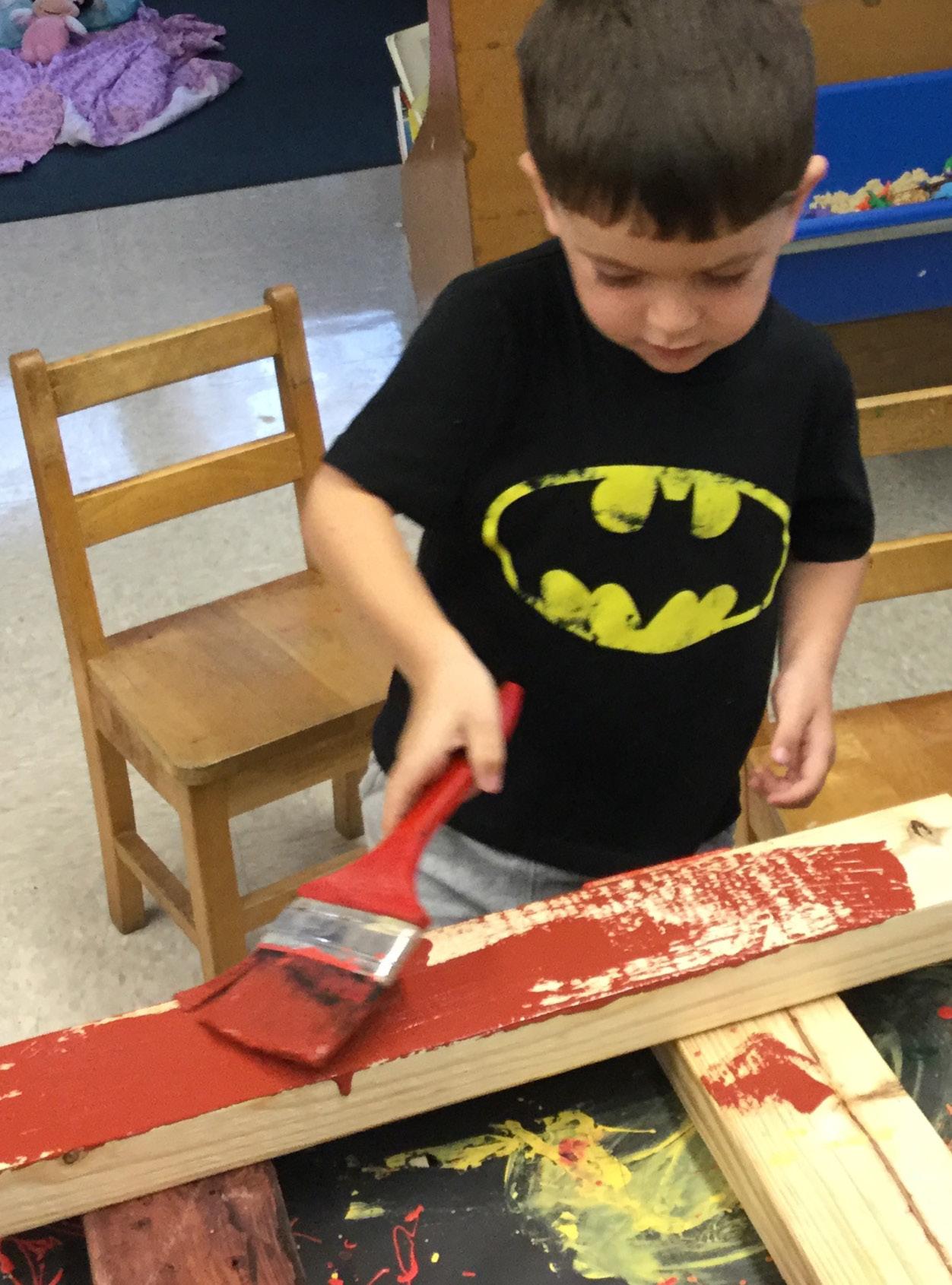
3 minute read
Research shows that giving children the opportunity to try something that may seem beyond their skill level is an excellent way to build confidence.
Real Tools for Their Toolbox
Three-year-olds use real tools to build a bench for their play yard

When three-year-olds in the George Cottage Oak class noticed there was no bench in the play yard for students to sit on, they expressed an interest in getting one.
“The teachers had a bench, but it was really tall for us,” explained Sadie Luby ’34. “We wanted a bench of our own.”
Rather than immediately purchasing a bench, teachers jumped on the opportunity to follow the students’ interest and embarked on a project to build one instead. The George Cottage’s Reggio Emilia-inspired program is based on the idea that children learn best when engaged in meaningful work that grows from their interests. For the teachers of these very eager three-year-olds, this project fit the bill perfectly.
“We started by talking with the children about what makes something comfortable to sit on, and how many children they wanted the bench to be able to seat,” said Jenny Collins, George Cottage Oaks teacher. “They sat on benches with backs and without, with armrests and without. Each time, we discussed options and took a vote.”

The group looked at photos of benches online to identify several potential style options. They then debated how many children should fit on the bench and measured the necessary length to accommodate them. Ultimately, students decided on the style and the height (short enough so their feet could touch the floor) of the bench.
Students practiced measuring with a variety of tools, from rulers to measuring tapes to t-squares. The children also began practicing how to safely use small handsaws, hammers, and nails with the guidance of their teachers. Then they used mallots to hammer golf tees into foam blocks. Once they mastered this skill, they hammered real nails into pre-drilled holes in scrap pieces of wood.
When they were ready to build, students visited The Gibbs Family Center for Innovation + Design to have the wood cut into appropriate sizes. They also practiced holding unplugged power tools. With their teachers’ help, they even practiced screwing two pieces of wood together.

The next step was painting and assembly. When Collins noticed that she made a mistake with the assembly, she pointed it out to the students.
“I think it is so important for them to see their teacher make a mistake and stay calm enough to work through a solution,” she said. “We asked the class what they thought the solution should be. They wanted to back up a few steps and do it right. I was so impressed with that and the patience it took for them to decide to do the work over again.”
For several days, teachers and students worked together to finish sanding and painting the pieces. Once it was completed, each student sat on the bench for a commemorative photo in the classroom. They also talked about where it should be installed in their play yard.
Several students had noticed memorial or honorary plaques on some of the benches on our campus, and asked about what that meant. After a discussion about items around campus that were given to remember or honor a special person, the children decided that they wanted to honor Mr. Nolan Dewey (longtime StM staff member), so they dedicated the bench to his memory.
“The pride on their faces after finishing the bench was such a joy to see,” said Collins. “They truly loved working on this project, and it shows how engaged they were with the entire process. The skills they learned were invaluable.”
Discover More: Watch a video of the bench building adventure online at http://bit.ly/StM-GC-Bench.





